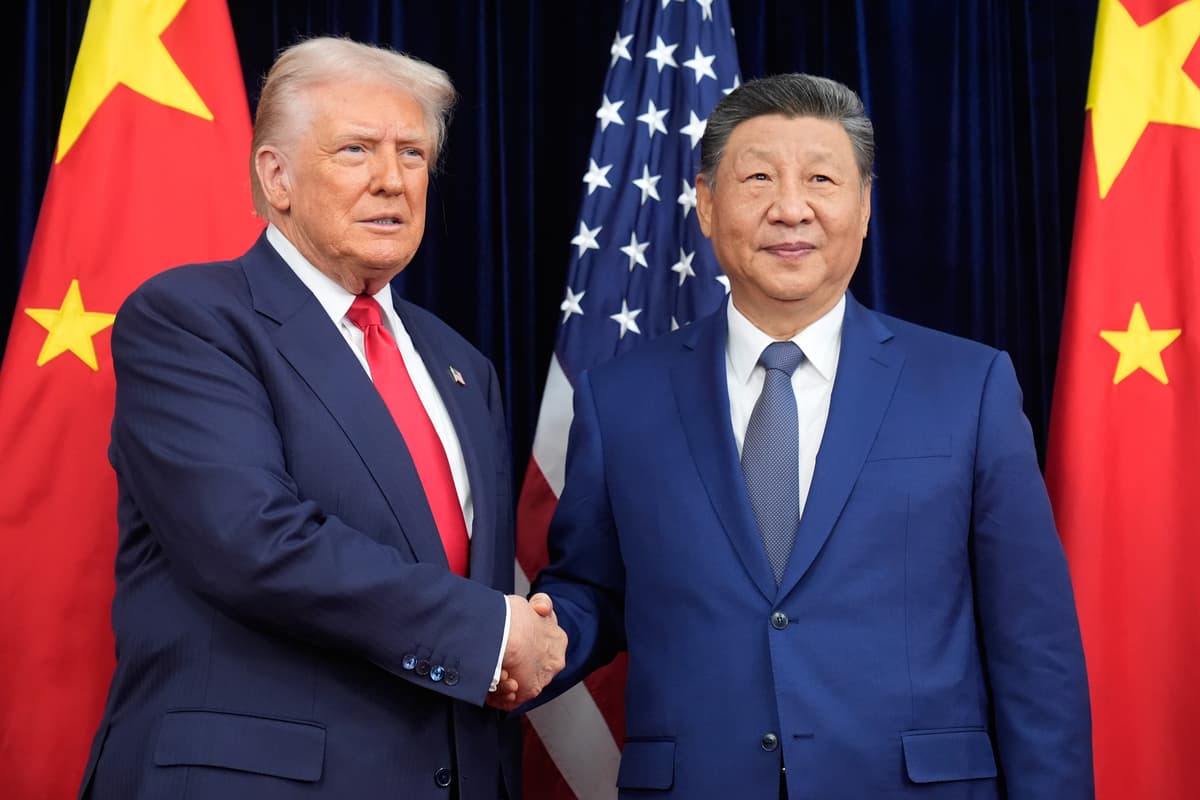Trump Agrees To Lower Tariffs on China and End Rare Earths Roadblock in Meeting With Xi
American soybean farmers should also be relieved that Xi reopened China’s markets to their products.

GYEONGJU, South Korea — America and Communist China have reached a “consensus” — a truce that falls short of a signed agreement — in their bitter battle over President Trump’s high tariffs and President Xi Jinping’s refusal to ship critical rare earth to America and import American soybeans.
The understanding struck by the two leaders at a South Korea base beside the airport serving the port city of Pusan drastically lowered the temperature of their confrontation that still threatens to boil over as they compete for power and influence in the Indo-Pacific.
Complicating the rivalry, Mr. Trump just before the meeting posted that he was ordering the Pentagon to conduct America’s first nuclear test since 1992 — though he implied any test would be in response to tests by others. North Korea, the only country to have tested a nuclear weapon since the 1990s, conducted its sixth, most recent test in 2017.
Mr. Xi showed no sign of awareness of that remark as he and Mr. Trump faced each other for 100 minutes across a table lined with their top ministers and cabinet secretaries By the time it was over, they both seemed happy to have gotten over, for now, China’s suspension of shipments of rare earth that are vital to electronic products in just about everything from computers to motor vehicles to jet engines. America’s soybean farmers should also be relieved that Mr. Xi reopened China’s markets to their products, from which they make more than $12 billion a year selling half their crop.
The deal, of course, depends on America lowering tariffs on Chinese products. They now are coming down from an average of 57 percent to 47 percent — and, in the case of chemicals used to produce the fentanyl that’s killing tens of thousands of Americans — from 20 percent to 10 percent.
Messrs. Trump and Xi, appearing live on all South Korean networks before and after the meeting, both seened delighted with the outcome, most of which their deputies had thrashed out in advance in talks at Washington and on the sidelines of the gathering last weekend of the Association of Southeast Asian Nations at Kuala Lumpur.
Their responses to their meeting, though, was a study in contrasts reflecting their leadership styles and possibly their view of how long the unsigned understanding would hold. Mr. Trump, asked how he would view the conversation on a scale of one to 10 — 10 at the top — responded, “The meeting was a 12.” There was, he said, “no roadblock on rare earths.”
China’s official Xinhua news agency affirmed the two presidents had “reached consensus on solutions to problems” without reporting details. Rather, said Xinhua, Mr. Xi called on “both sides to focus on long-term benefits brought by cooperation rather than falling into vicious cycle of retaliation.”
That strong wording indicated that Mr. Xi had deliberately avoided the whole topic of China’s claims to the Free Chinese island of Taiwan, which it intimidates with air and naval exercises, and to the South China Sea, where it’s built several air and naval bases. Those topics, the focus of numerous crises, did not come up in a discussion that dwelled almost entirely on trade and tariffs.
The immediate aftermath of the meeting, though, indicated differing priorities in which Mr. Xi clearly is bent on extending power and influence in the region.
While Mr. Trump took off in Air Force One for Washington, Mr. Xi headed up to Gyeongju in a motorcade to join in two days of talks at the gathering here of the Asia-Pacific Economic Cooperation group. His presence is expected to dominate the talks among 21 regional leaders, including Taiwan’s President William Lai. Messrs. Xi and Lai are likely to shake hands briefly as they walk past one another.
Just what Mr. Trump meant by saying he was ordering a nuclear test will undoubtedly be a hot topic on the sidelines of APEC especially in view of the nuclear non-proliferation treaty signed by America, China and Russia.
China, which last tested a nuke since 1996, issued a statement calling on Washington to honor “its commitment to suspend nuclear testing” and “safeguard” the non-proliferation regime. China has about 600 nukes, far behind America and Russia, which last tested a nuke in 1990.
The White House has not elaborated on Mr. Trump’s remark about nuclear testing, leaving the impression that perhaps the president was referring not to nukes per se but to long-range missiles capable of carrying them to distant targets.

